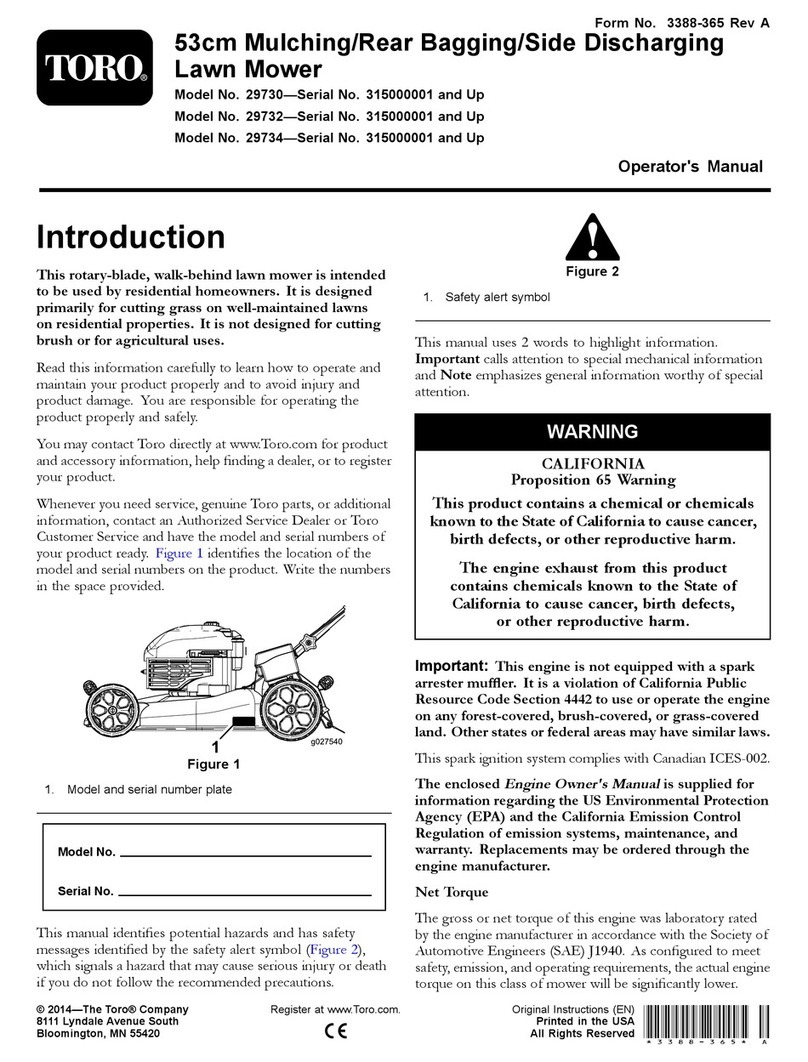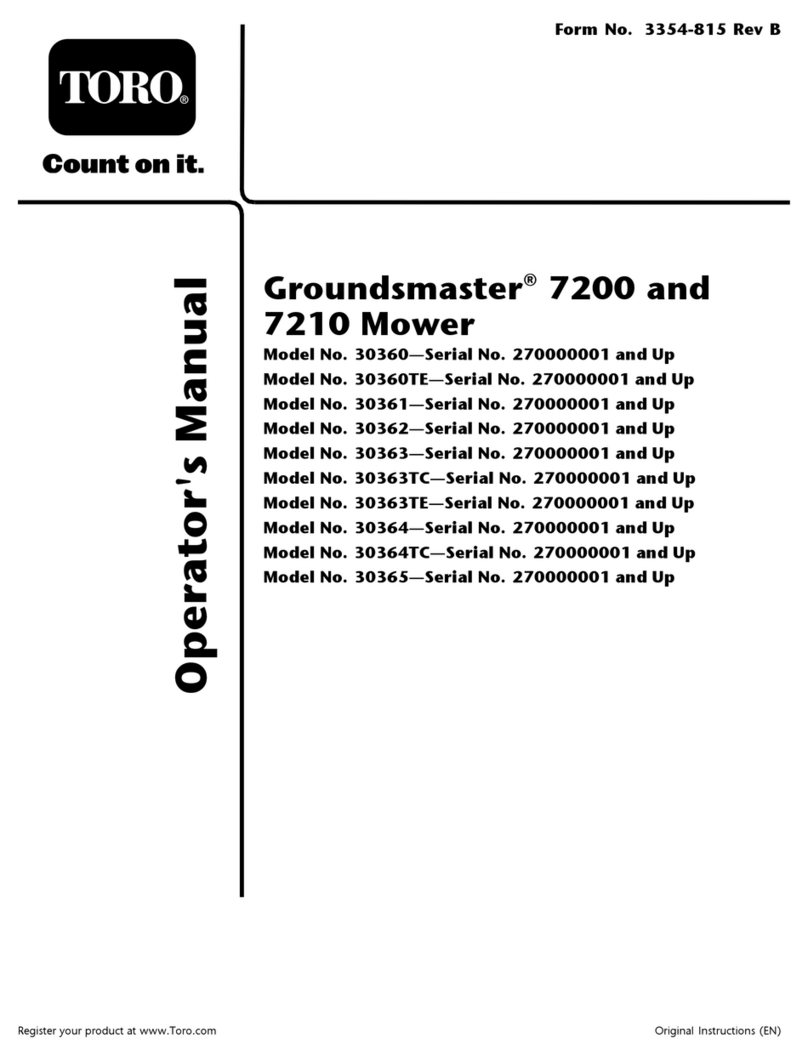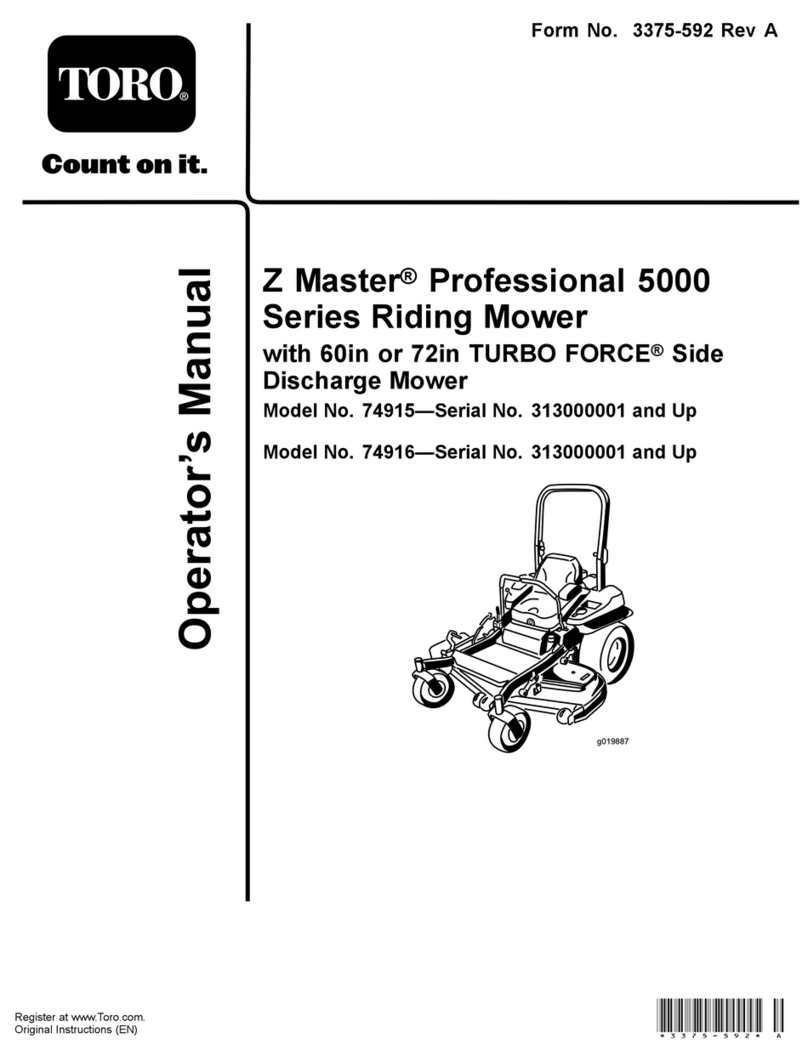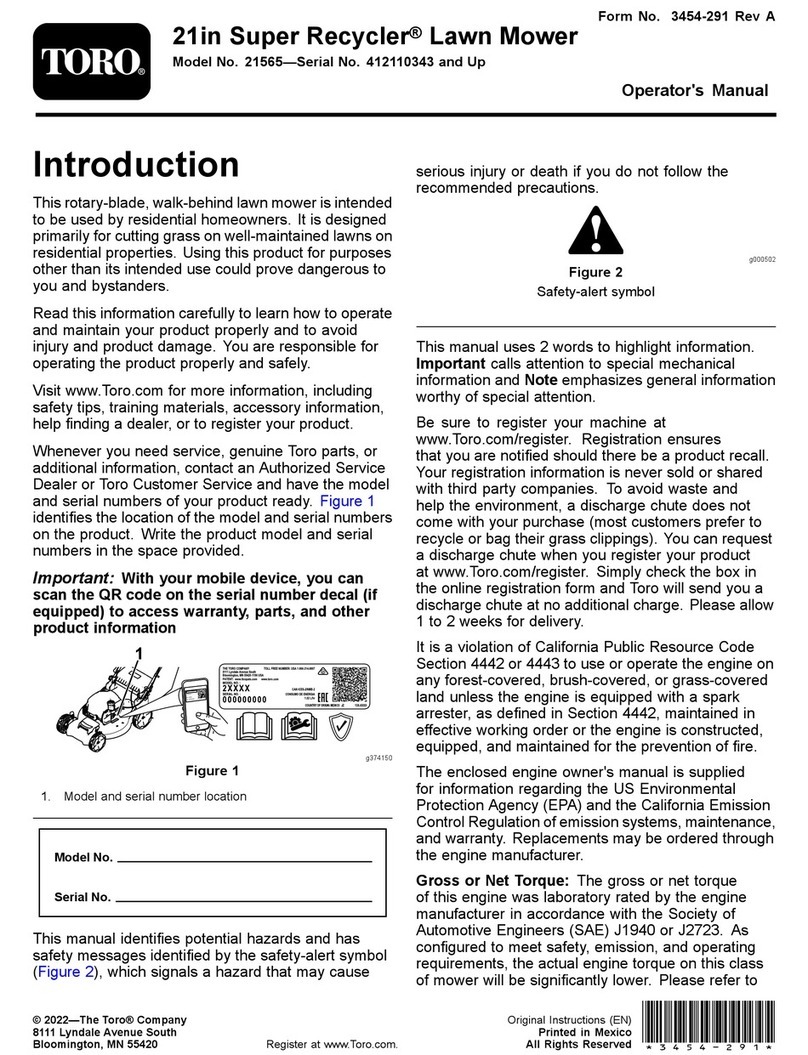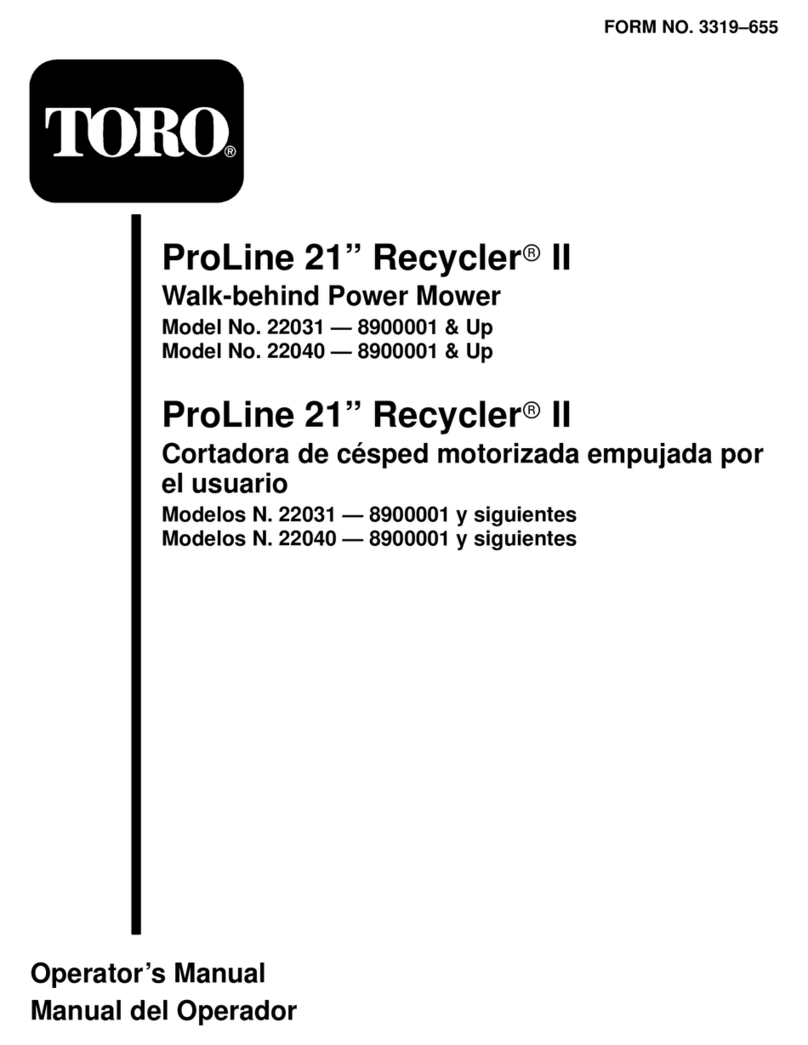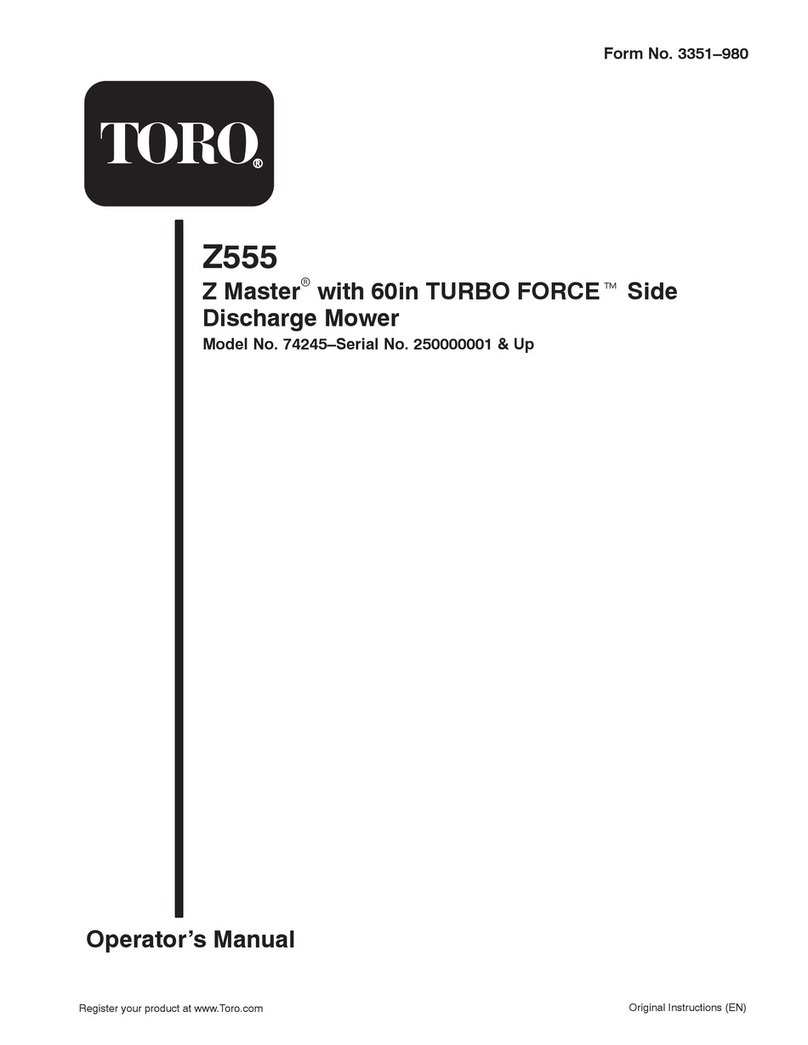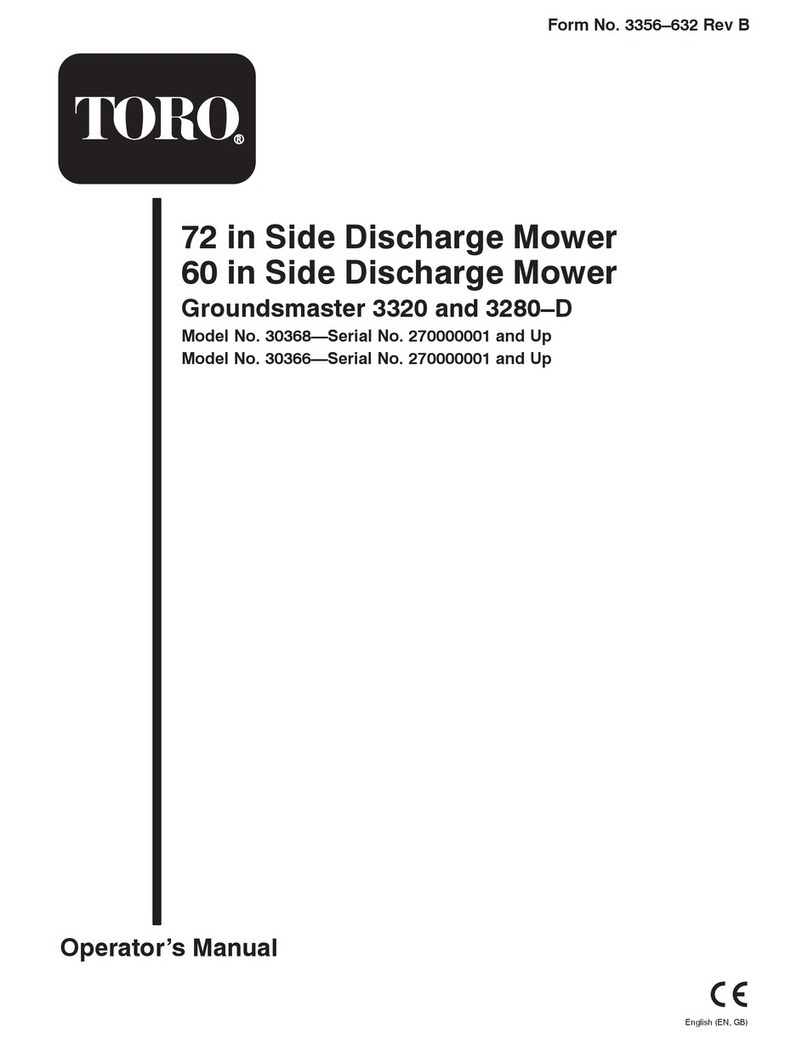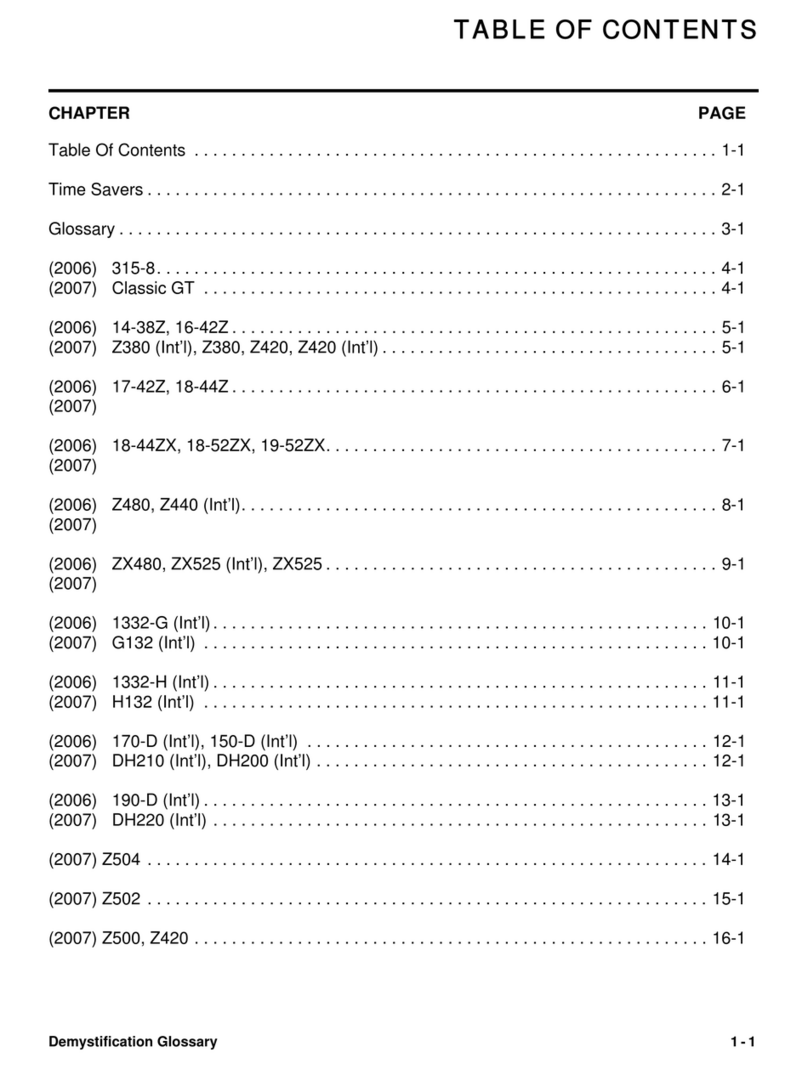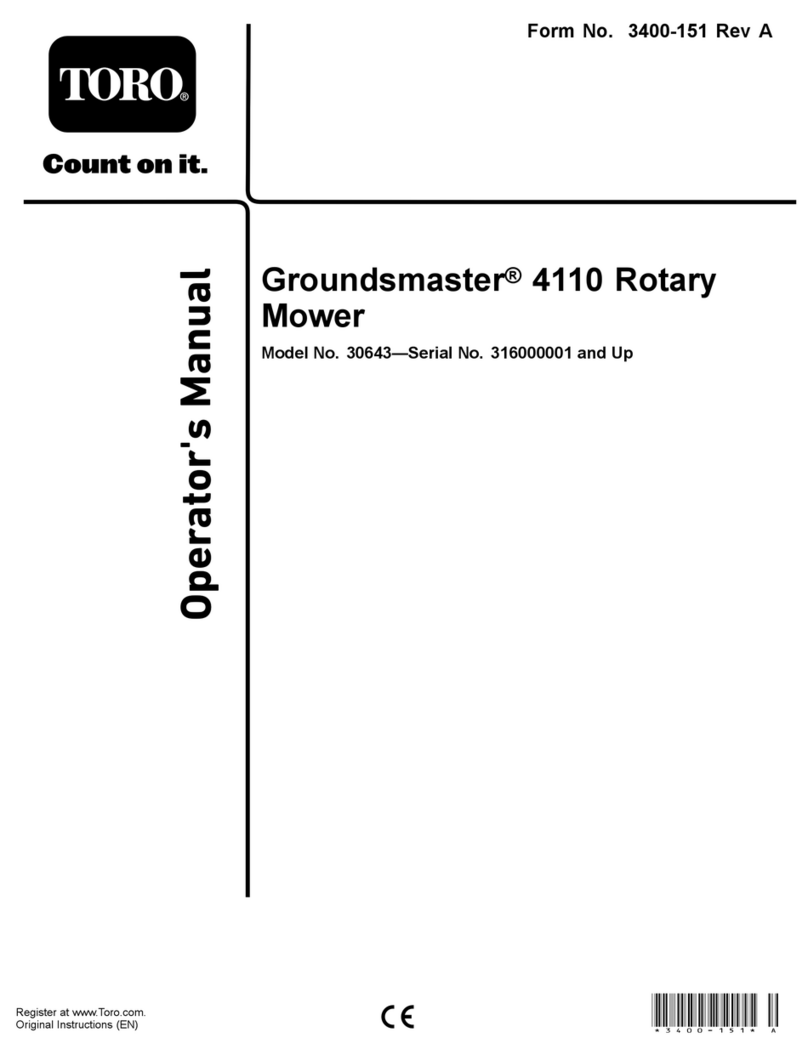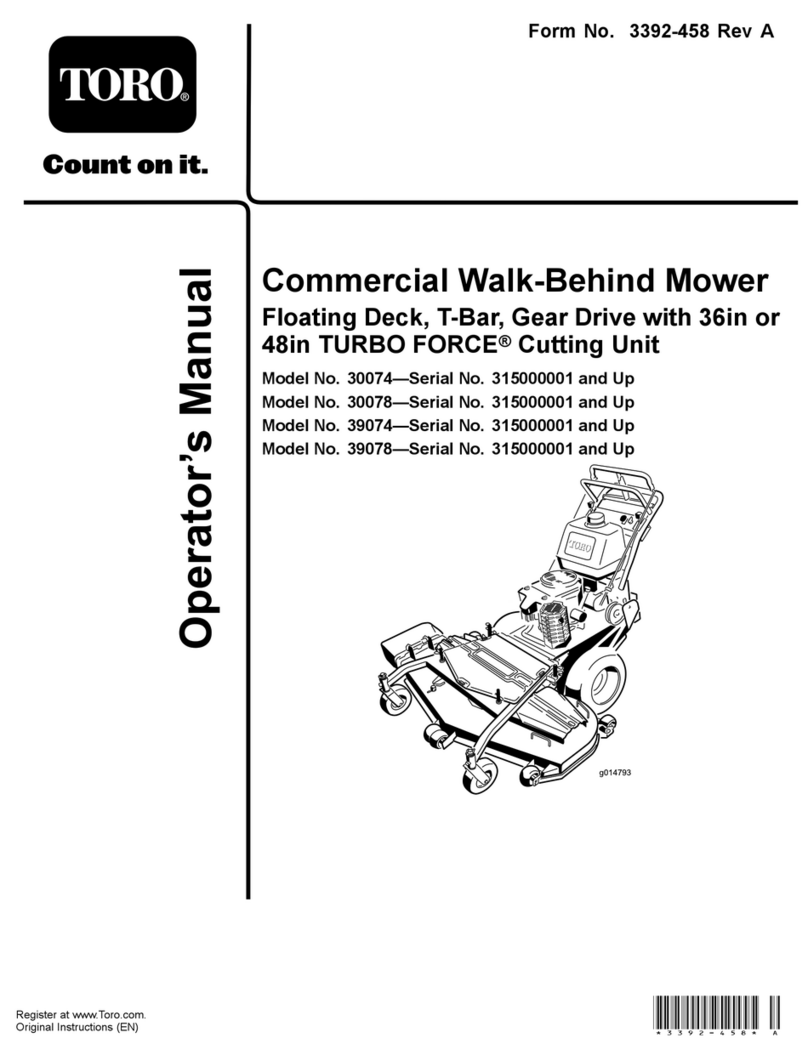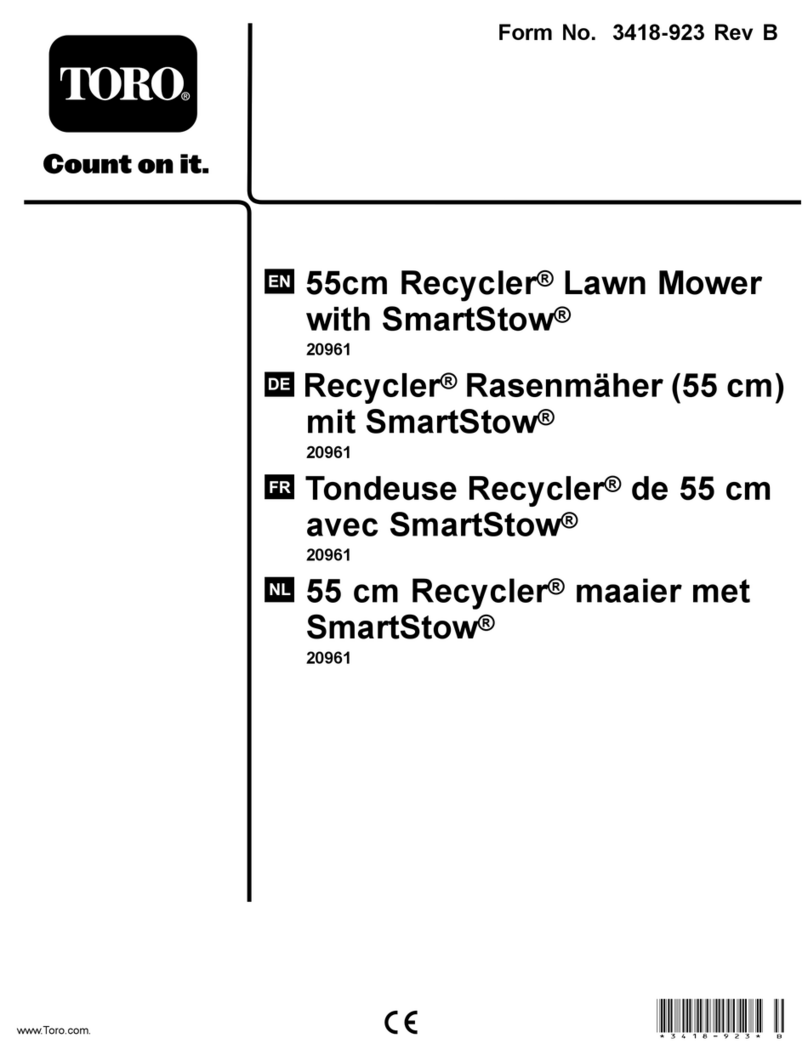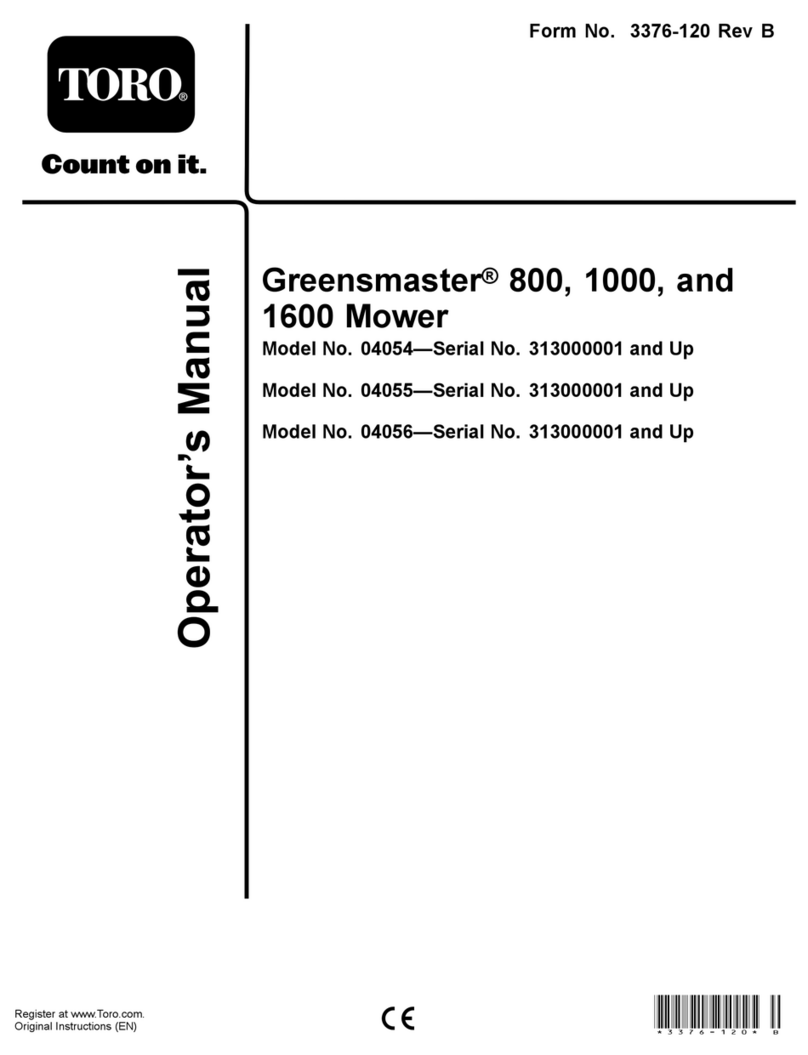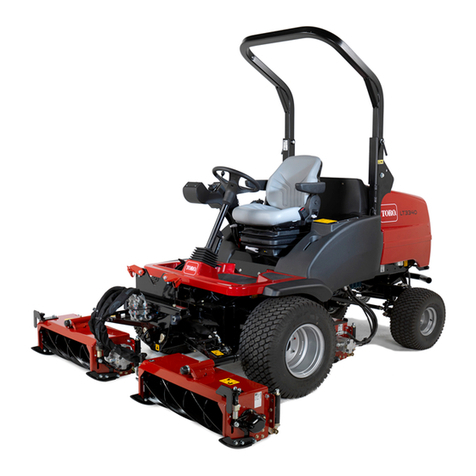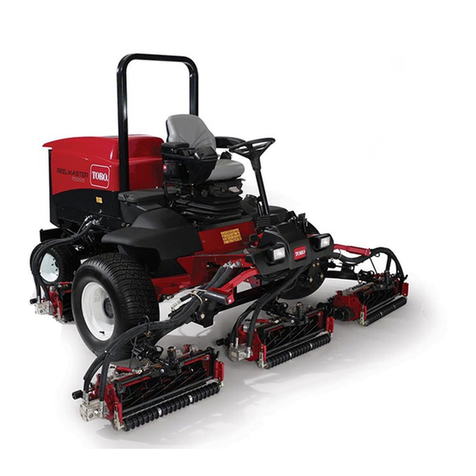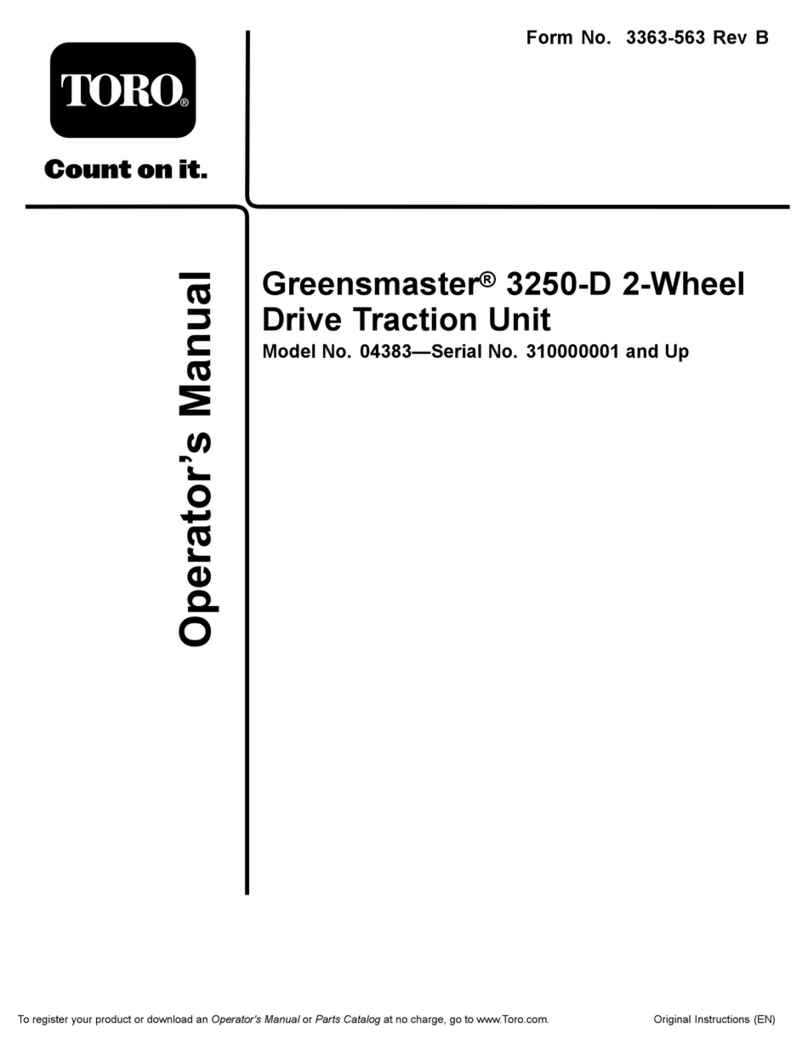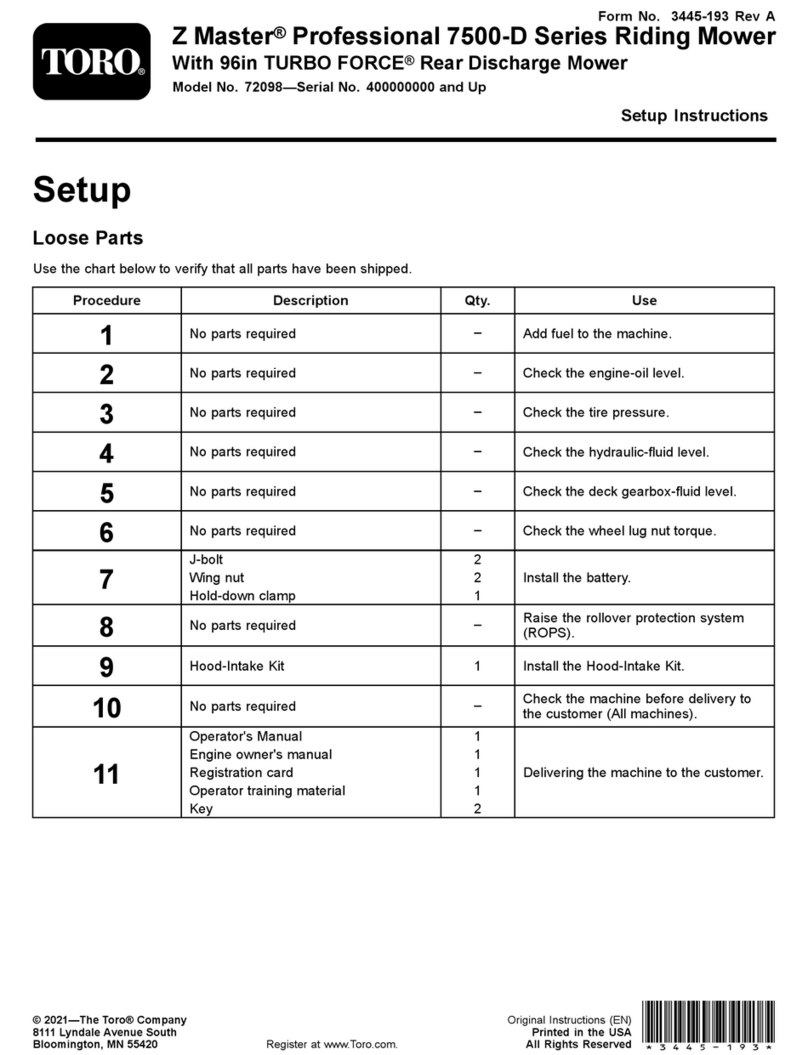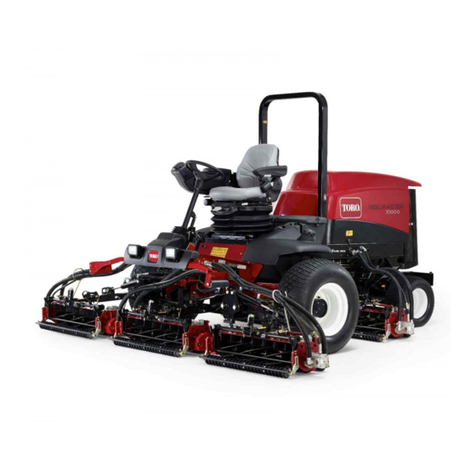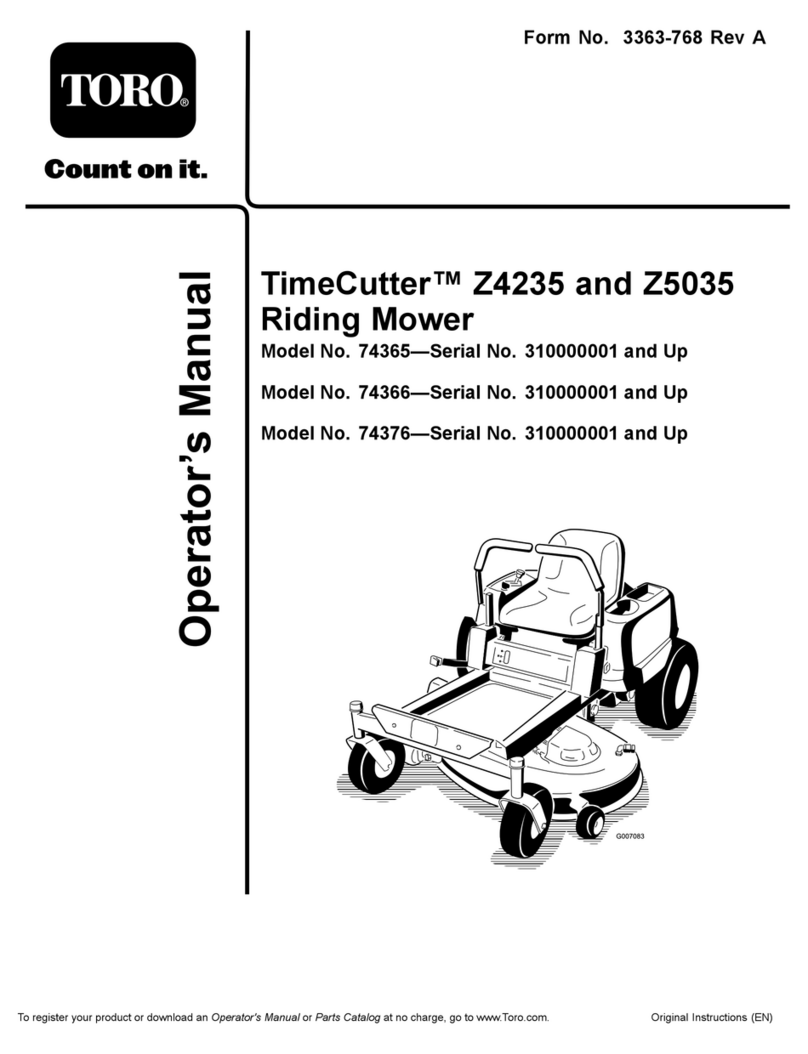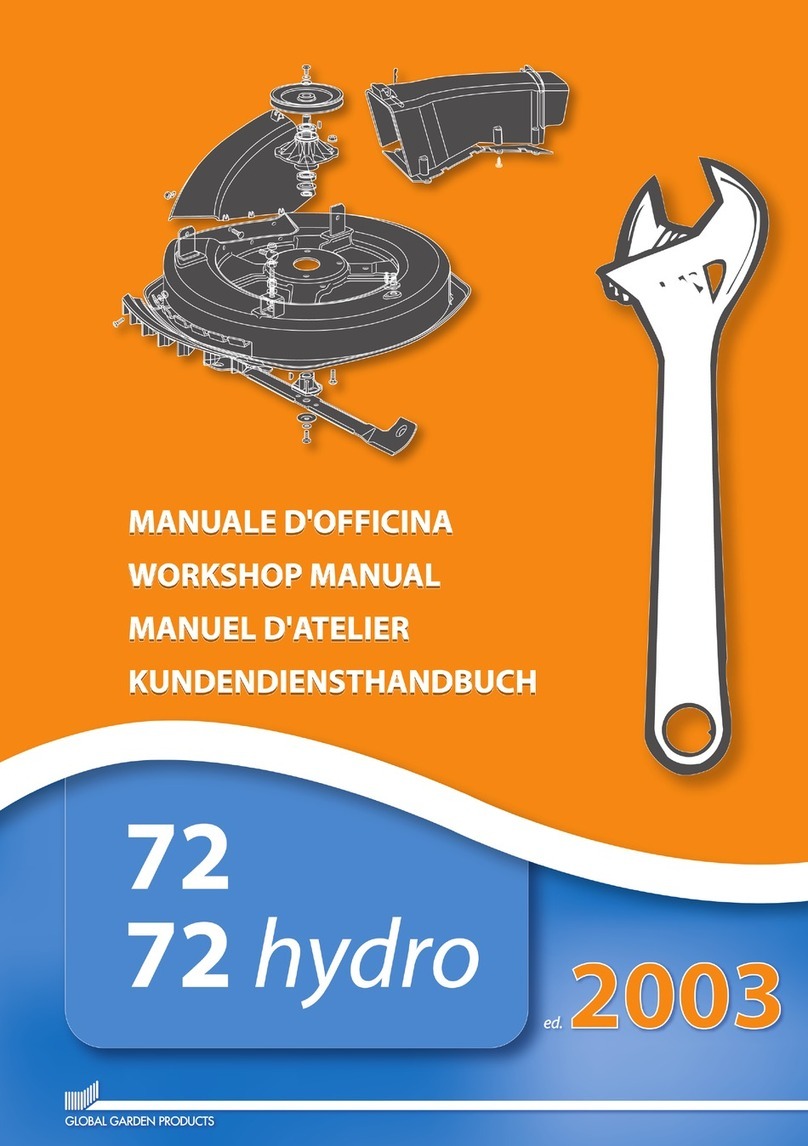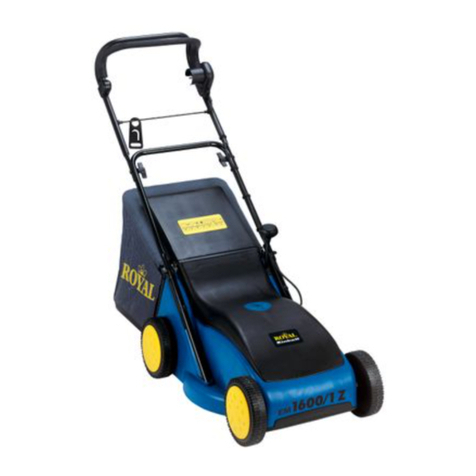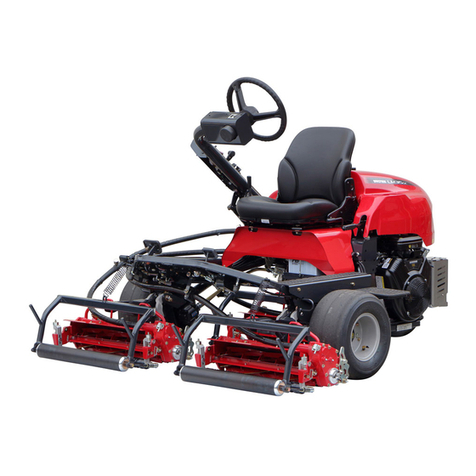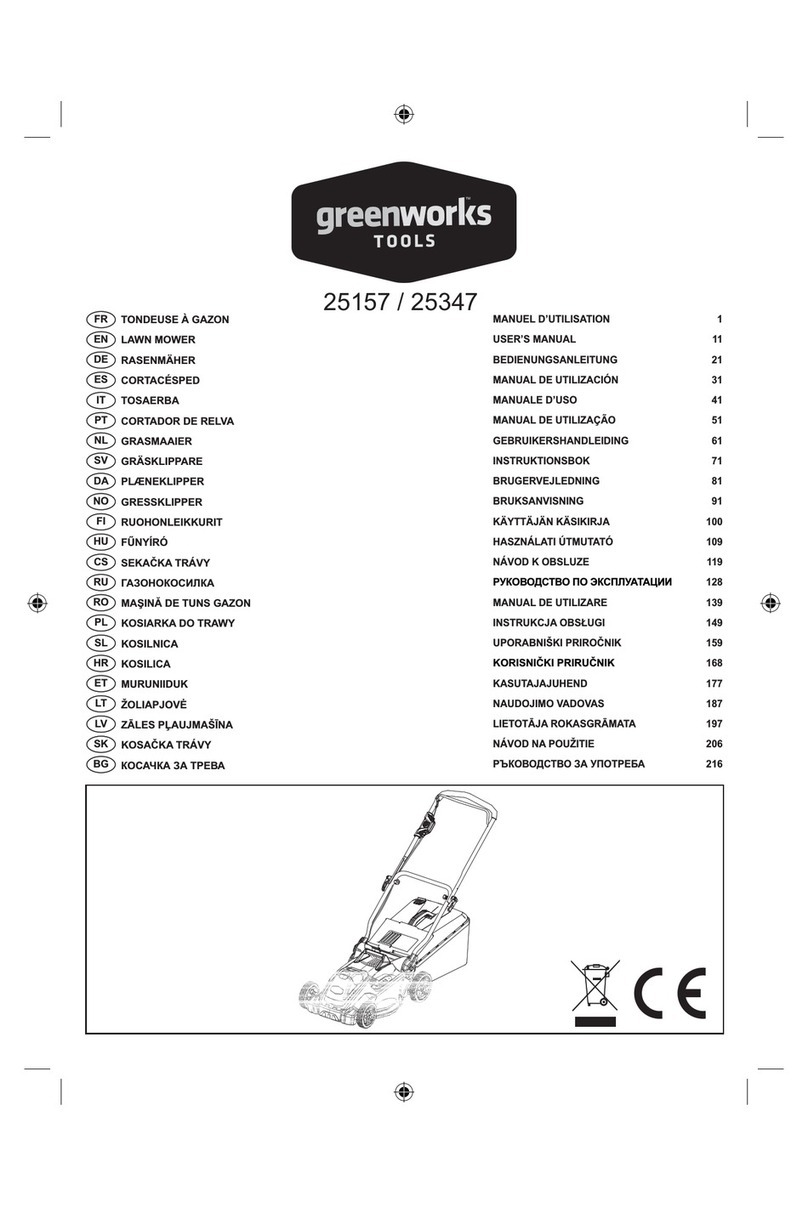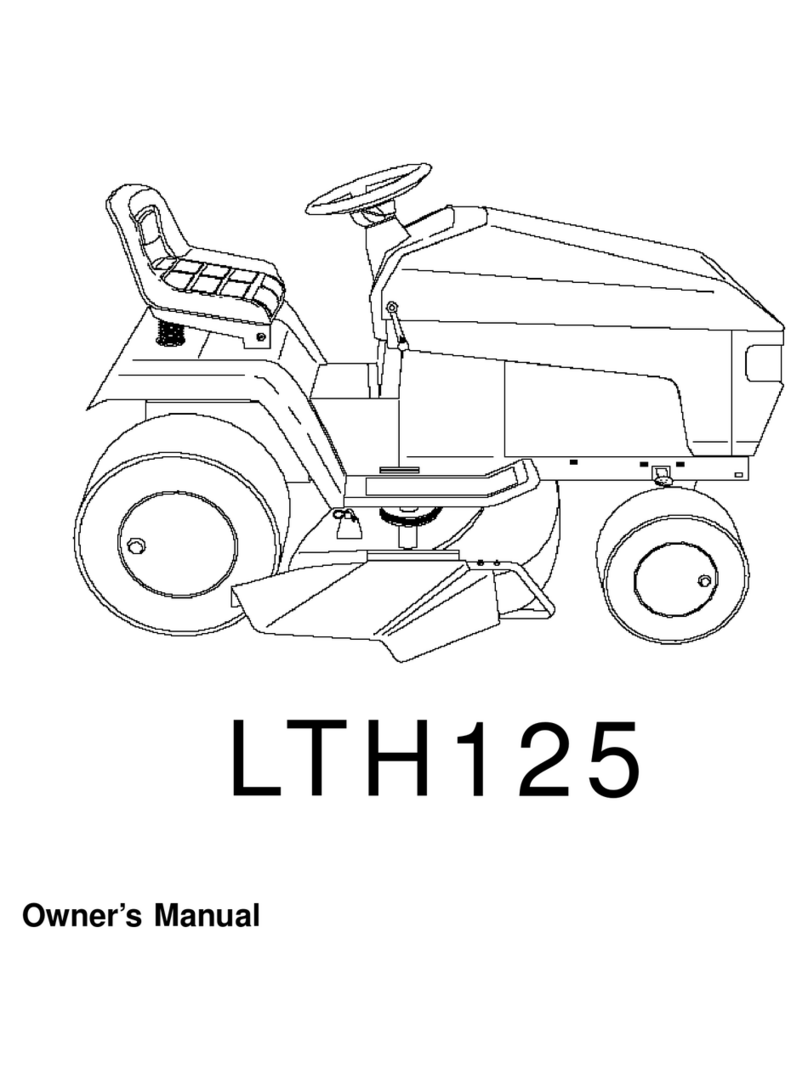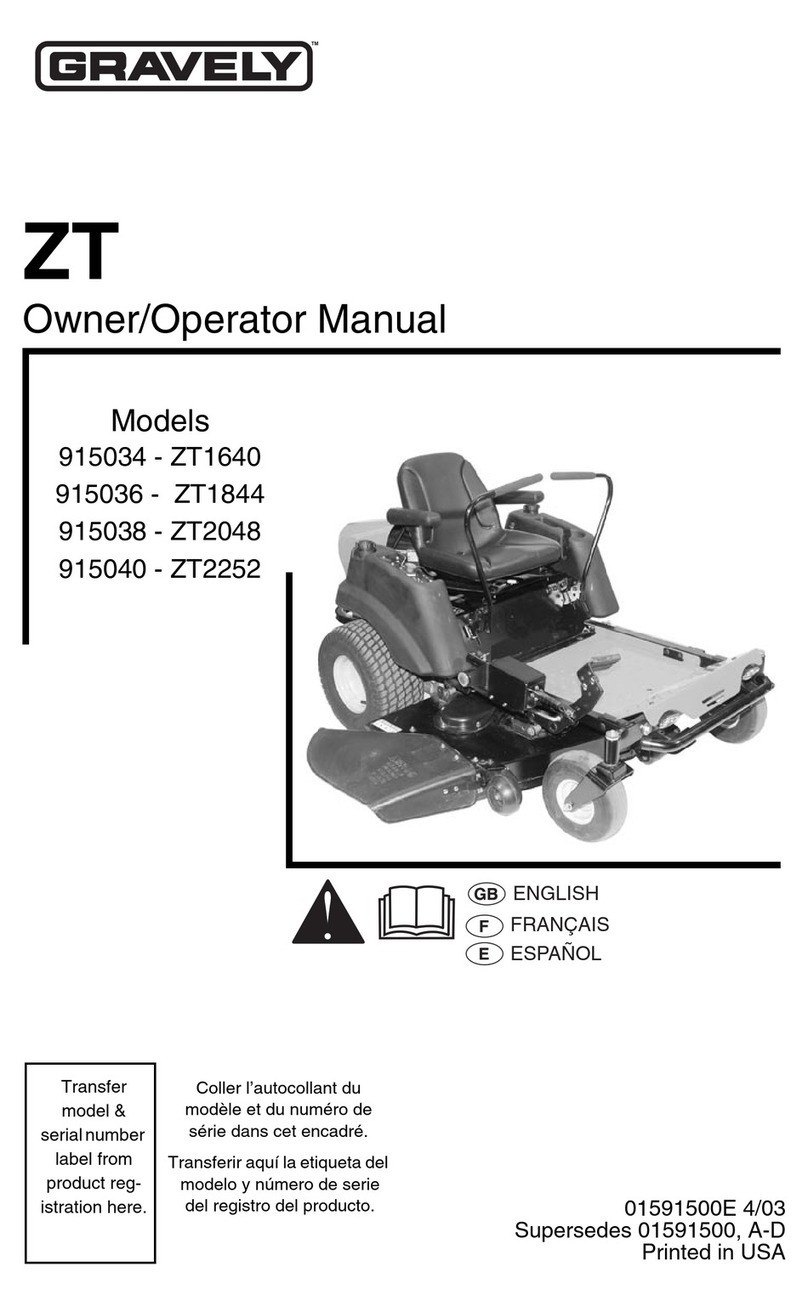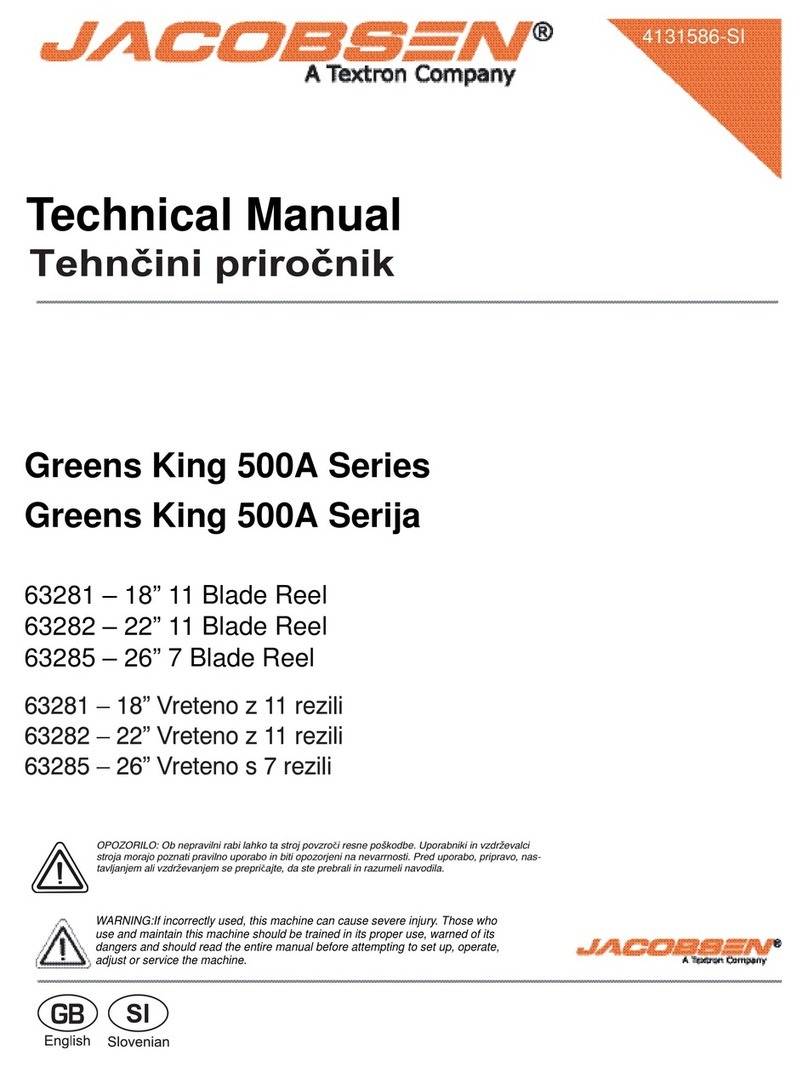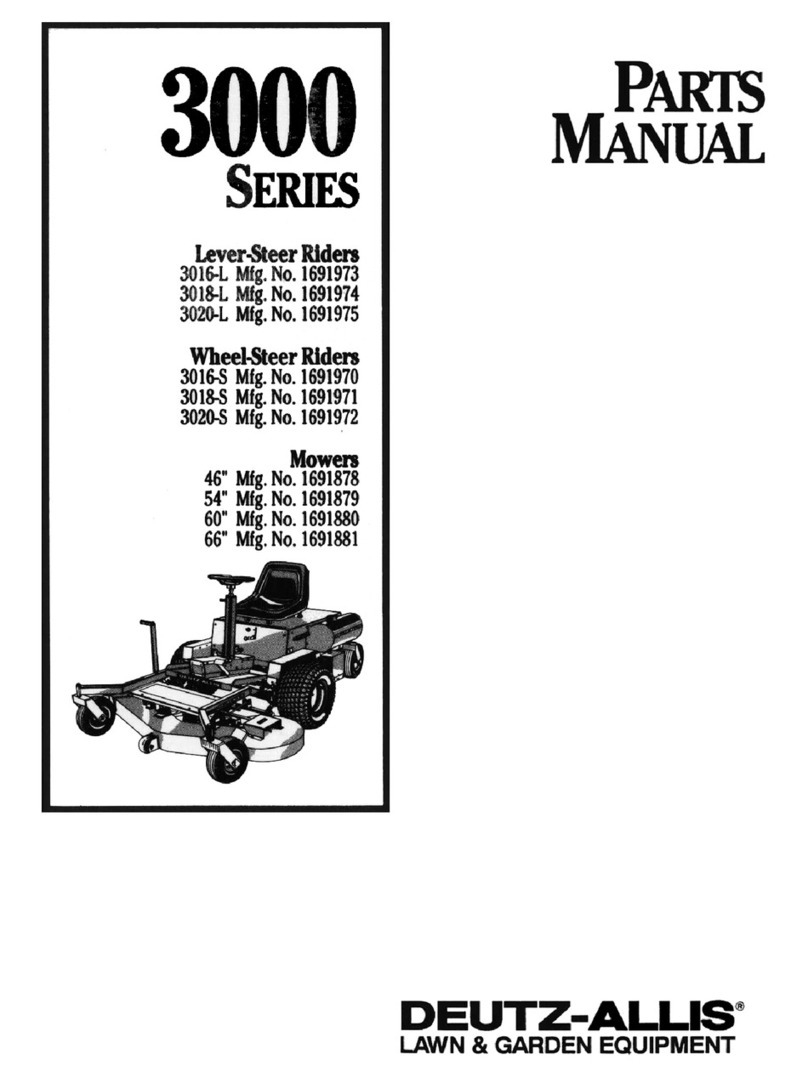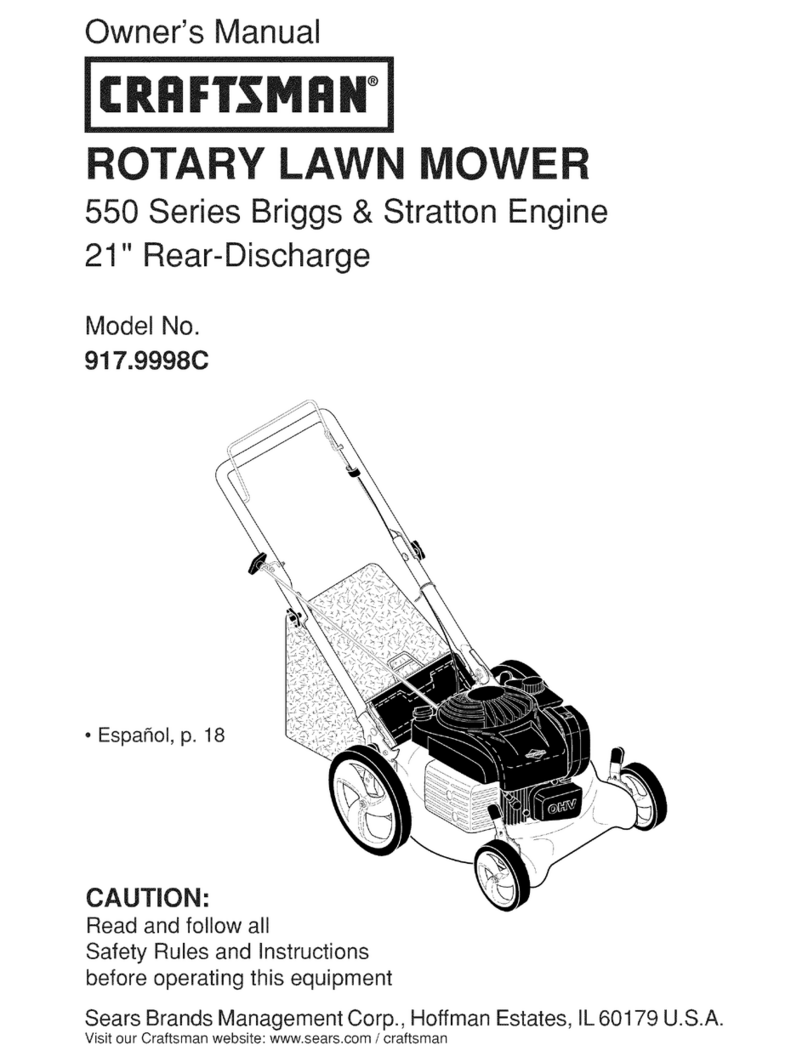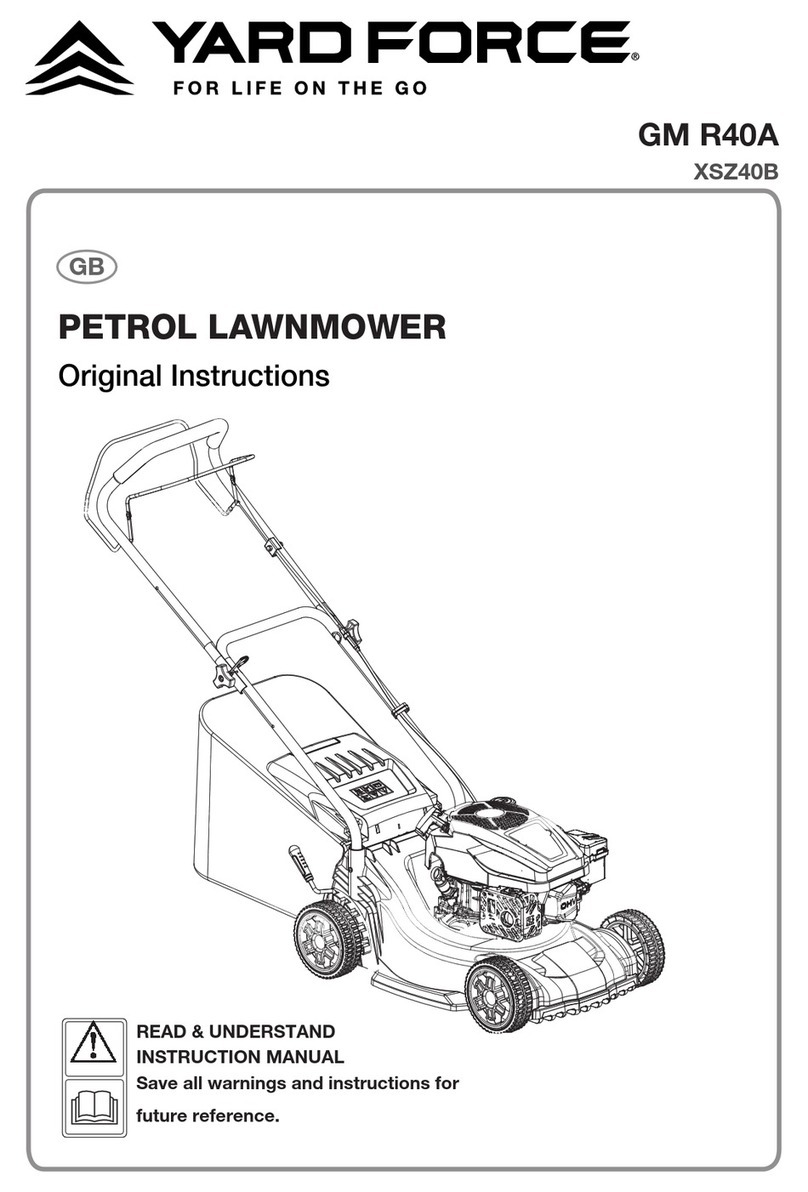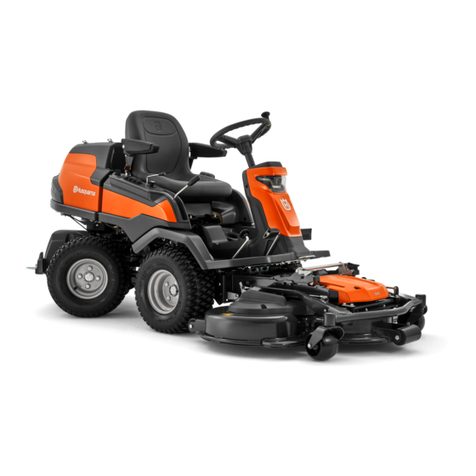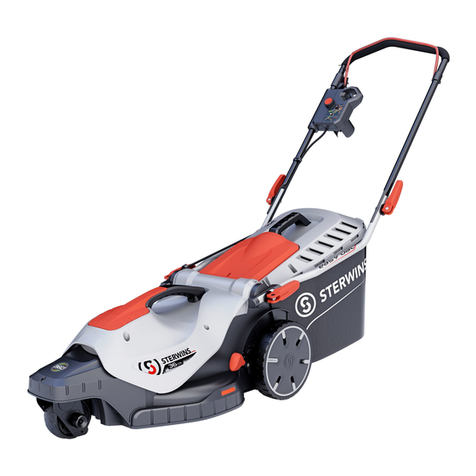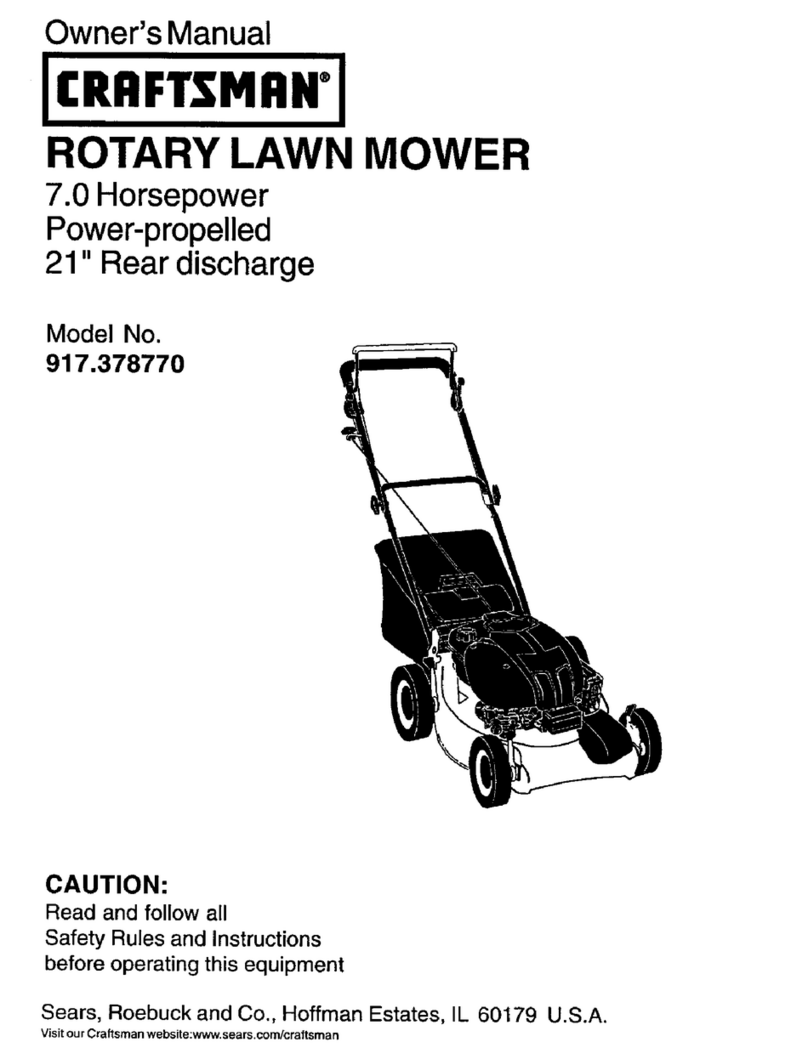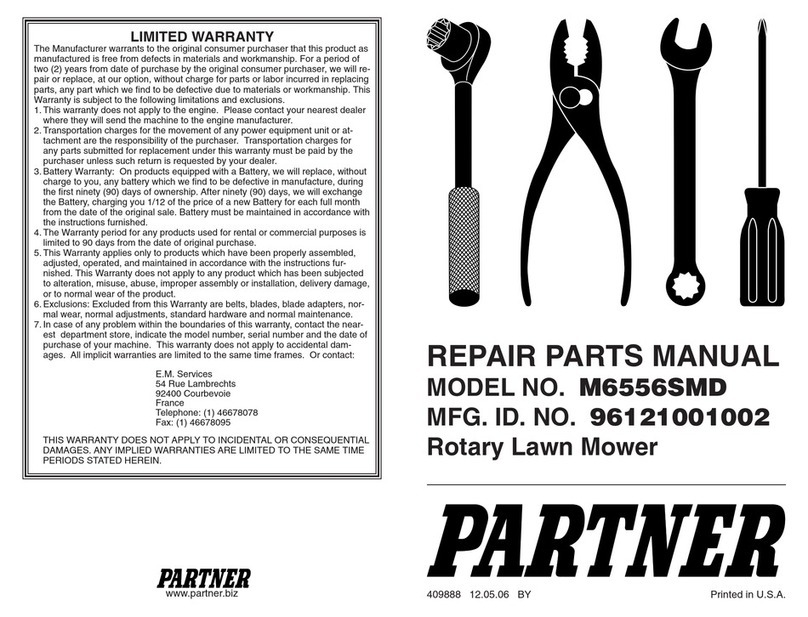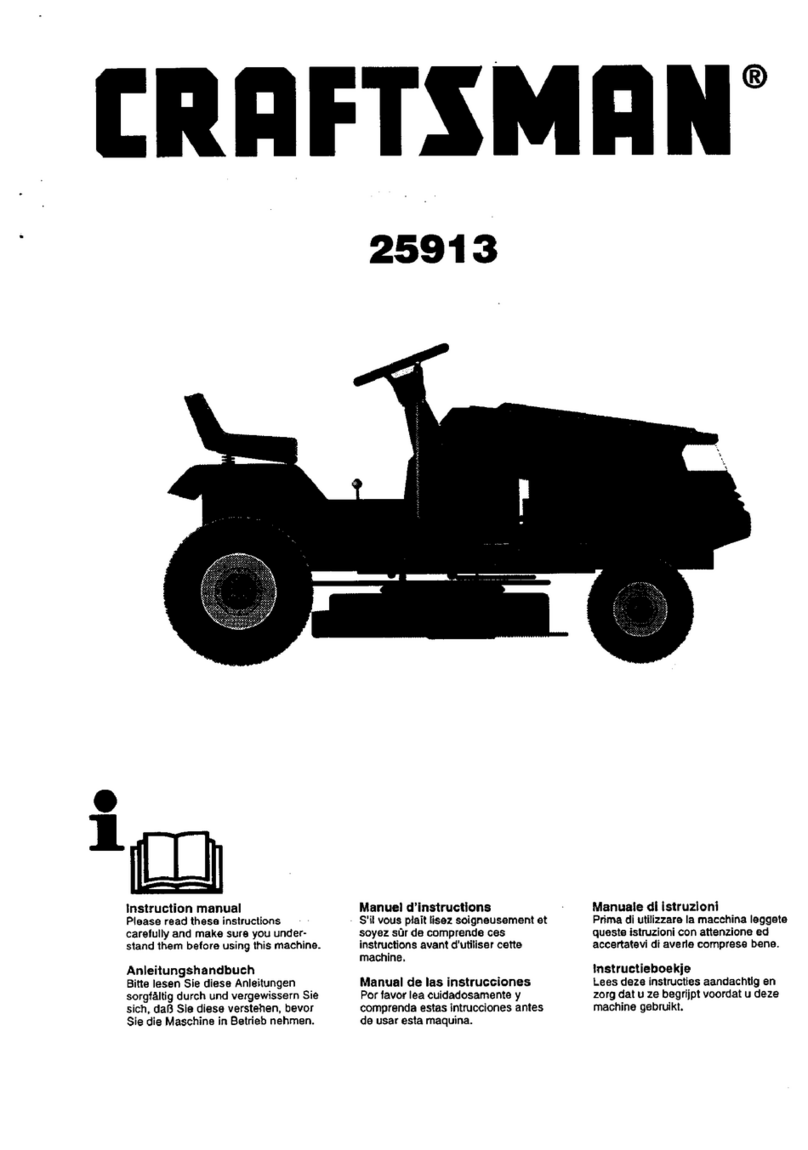Configuration: Tricycle vehicle with two front wheels
providing drive and one rear wheel providing steering.
The operator sits in the center over the #1 cutting unit
with the #2 and #3 cutting units in front of the vehicle.
Certification: Certified to meet ANSI specification B7
1.4-1 990 and European CE standards.
Engine: Briggs & Stratton/Daihatsu, three cylinder,
water-cooled gasoline engine. 697cc. Full-pressure 13.4
kW 18 @ s800 rpm. Electronic engine speed control—
2800 rpm for mowing or transport and 1500 rpm for idle
(no load). Optional 2300 rpm for mowing or transport.
Frame: Welded steel tube construction in an “A” frame
configuration.
Air Cleaner: Donaldson heavy-duty remote air cleaner.
Steering: Power steering. Danfoss open-center, non-
load reacting steering valve with power beyond for
raise/lower circuit and Hydrostat charge circuit. 33 cm
round steering wheel. Quick adjust steering arm
position, with arm motion allowing a wide range of
operator sizes. Steering cylinder has a 3.81 inch bore x
15.875 stroke with through shaft design for accurate
straight line steering.
Fuel Capacity: 6 gallons (22.7 liters) capacity, diesel.
Hydraulic Oil Capacity:30.8 liter nylon oil reservoir.
Mobile 424 standard. Moble EAL 24H approved.
Hydraulic oil filter has 5-micron, long-life filtration of
reel circuit.
Traction Drive: Hydrostatic piston pump, closed loop
system. Foot pedal forward and reverse; infinitely
variable. Two front-wheel orbit motors, 26.23cm/rev
displacement.
Ground Speed: Forward—mowing speed is variable
from 2 to 5 mph (3.2 to 8 km/h), adjusted by a stop on
the pedal mechanism. Mow speed setting does not affect
transport speed. Maximum transport speed is 8.1 mph
(13 km/h); it may be reduced by adjusting the stop in
footrest pan without affecting mow speeds. Reverse is
2.5 mph (4.0 km/h).
Turf Compaction Pressure: 69 kPa average at
recommended minimum tire pressures, with a 75 kg
operator and cutting units down.
Tires: Three 18 x 9.50 x 8, 2-ply pneumatic tubeless
demountable and interchangeable. Smooth tread.
Tire pressure: 55–83 kPa front
55–103 kPa rear
Brakes: 15 cm drum type mechanical with rack and
pawl lock for parking.
Cutting Unit Drive: Hydraulic drive; one 1.273cm/rev
gear pump section powers three reel motors in series.
Manifold block with cartridge valves controls flow,
electrical on/off. Reel motors have 1.853cm/rev
displacement, low pressure case drains, and Toro
exclusive “twist-mount” partial flange cut-away for fast
installation.
Clip: Dependent on mowing ground speed, reel rpm, and
number of reel blades. Mowing ground speed is easily
changed by adjusting the pedal mow stop (this will not
affect transport speed). lncreasing ground speed will
increase clip length and decrease cuts per meter. In
general, the quality of cut will be best when clip and
height of cut are nearly equal.
Cutting Unit Suspension: Cutting units are completely
free floating, each attaching to the traction unit by a
single low pull point and lifted by a centered lift arm.
Baskets are supported by carrier frames that are
suspended off the ground by adjustable stops in the
tractor frame weldment. Cutting unit floatation is
unaffected by basket content.
Electrical Features: Maintenance-free 12-volt battery
with 530 cold cranking amps at –18° C and 85 minutes
reserve capacity at 29° C. 27-amp alternator, circuit
fused at 40 amps. Ignition switch/key. Seat switch.
High-temperature engine-kill override switch. Harness
terminals. Fuse slot, and console switch location
available for optional lights installation.
Controls/Gauges: Hand-operated throttle, raise/lower/
mow lever, and functional control (neutral, mow,
transport) lever. Foot-operated traction drive brakes.
Hour meter and 4-bulb warning cluster.
9
Specifications
